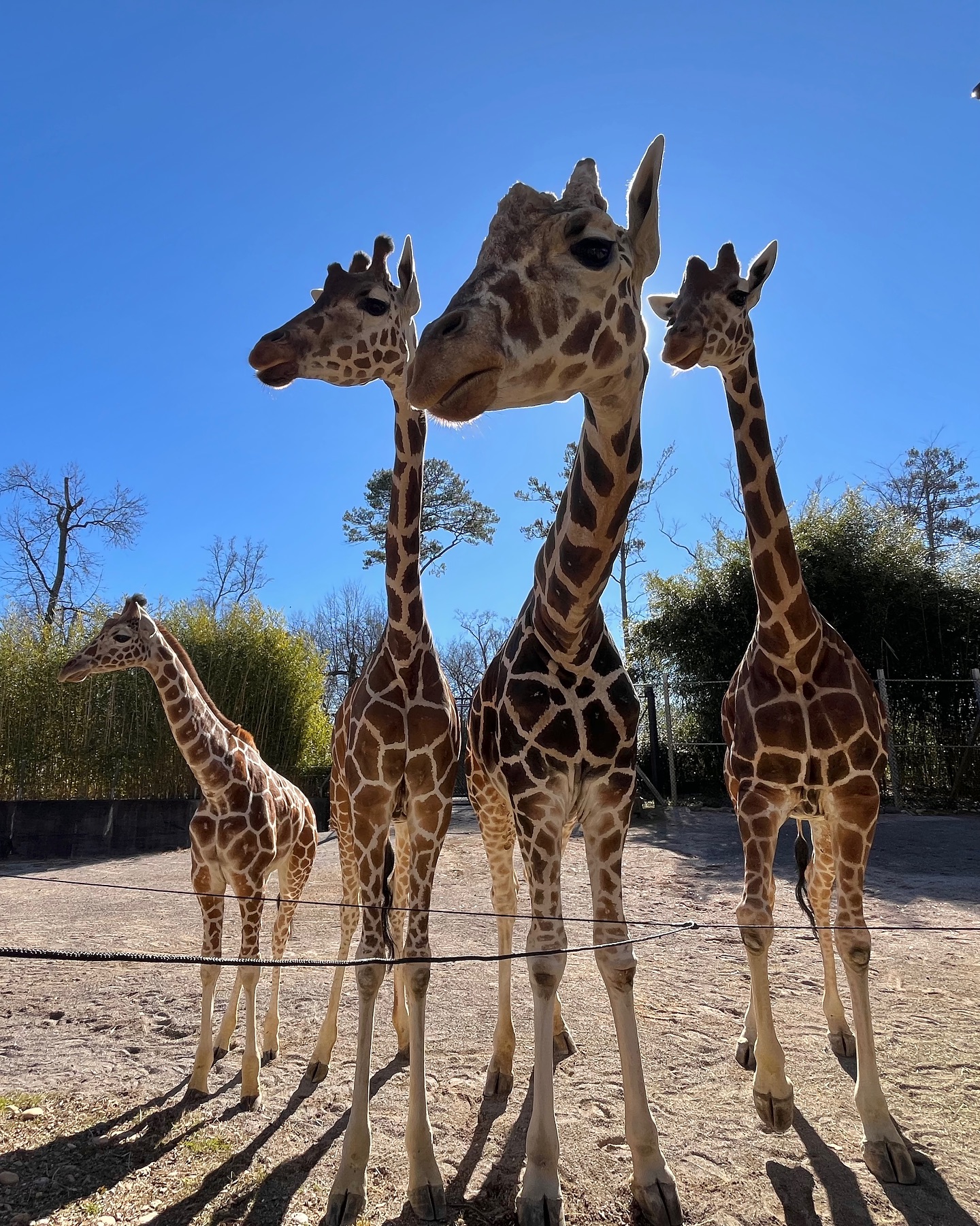- Giraffe characteristics and biology
- Threats to giraffe populations
- Conservation efforts and programs
- The role of zoos in giraffe preservation
- How individuals can contribute to giraffe conservation
Giraffes, the tallest land mammals, exhibit remarkable characteristics that set them apart from other wildlife. Standing up to 18 feet tall, adult giraffes are known for their long necks, which can extend six feet alone. These extraordinary features not only allow them to reach leaves high in acacia trees, primarily their food source, but also provide an advantage in spotting predators from afar. Giraffes possess a unique circulatory system consisting of a large heart that can weigh up to 25 pounds, designed to pump blood up their long necks to the brain. The giraffe’s skin has a patchwork of spots that serve as camouflage against the dappled light of their savanna habitats.
The giraffe’s tongue, approximately 20 inches long, is prehensile and darkly pigmented, which protects it from sunburn as it feeds. Their daily eating routine involves consuming around 75 pounds of leaves. This distinctive dietary practice reflects their adaptations in an environment where competition for food can be fierce. The long necks of males are also utilized in "necking" battles for dominance and mating rights, further underscoring their fascinating biology.
Despite these incredible traits, giraffe populations have seen a staggering reduction of 30% in the last 35 years. This decline results from several factors, including habitat loss due to agriculture, urbanization, and poaching for meat, skin, and trophy hunting. As the human population expands, natural habitats are irrevocably altered, making it difficult for giraffes to find food sources and safe areas for reproduction. This alarming trend calls for increased awareness and action, as the survival of these animals hangs in the balance.
Conservation efforts are critical in reversing the alarming decline of giraffe populations. Numerous organizations work tirelessly on the ground and in communities to promote sustainable practices that protect giraffes and their habitats. These initiatives encompass the protection of existing habitats and the restoration of areas damaged by human activity. Research is also fundamental in assessing giraffe populations and understanding their behaviors, including migration patterns and social structures. This data informs conservation strategies intended to adapt to ongoing environmental changes.
Zoos play a pivotal role in giraffe conservation efforts by supporting breeding programs and educational initiatives. Many accredited zoos have established Species Survival Plans to maintain genetic diversity within captive breeding populations. While some may argue that keeping animals in zoos is morally questionable, these institutions are vital in rearing healthy giraffe populations for potential reintroduction into the wild. Moreover, zoos facilitate scientific research, helping to generate critical insights into giraffe care and management. Animal welfare practices in zoos strive to provide an optimal environment, enriching the giraffes’ lives and enhancing their well-being.
One effective way for individuals to contribute to giraffe conservation is by participating in adoption programs offered by many zoos. Through the "Adopt an Animal" scheme, enthusiasts can support their favorite long-necked legends while contributing funds towards giraffe care and habitat conservation projects. Such involvement not only fosters a deeper connection with wildlife but also emphasizes the importance of personal stewardship in wildlife preservation.
Education remains a cornerstone in fostering awareness of giraffe conservation. Zoos and wildlife centers utilize interactive displays, guided tours, and community outreach programs to inform visitors about the challenges facing giraffes. By sharing stories and data about the giraffe’s plight, these organizations encourage visitors to take action in their own lives. Awareness leads to advocacy, and individuals inspired by what they learn can add their voices to the call for giraffe protection.
Another method of promoting giraffe conservation involves supporting policies that aim to secure land for wildlife. Voting for legislation and engaging in discussions about environmental issues can create a ripple effect of change, emphasizing the importance of preserving natural habitats. Additionally, social media serves as a powerful platform, allowing advocates to share facts, stories, and to mobilize community support for giraffe conservation.
It’s crucial to recognize that while zoos and organizations spearhead substantial conservation efforts, individuals also bear responsibility for safeguarding giraffes and other wildlife. Small changes in daily life can contribute to wider conservation goals. For instance, reducing single-use plastics, advocating for sustainable farming practices, or participating in local clean-up events are actions that cumulatively make a significant impact.
Giraffes are not merely iconic figures of African savannas; they represent the challenges facing biodiversity today. As their populations dwindle, they remind us of the interconnectedness of ecosystems and the importance of every species. The conservation of these majestic creatures is a multifaceted challenge that requires concerted efforts from governments, non-profits, educational institutions, and individual citizens.
Research reveals that awareness is not merely beneficial; it fosters a sense of communal responsibility that can catalyze change. Communities that come together to support giraffe conservation initiatives can create sustainable environments that allow not only giraffes but many other species to thrive.
Through educational programs and public engagement, zoos help cultivate future generations of conservationists who will advocate for giraffes and other endangered species. By instilling a passion for wildlife from a young age, these institutions are essential in promoting a culture of conservation that can influence broader societal attitudes.
Participation in conservation programs connected to giraffe welfare benefits both the animals and the people involved. When individuals adopt a giraffe, they foster a connection that transcends mere observation. This emotional bond catalyzes a commitment to furthering giraffe protection efforts. Invested adoptive guardians often engage friends and family in discussions about giraffe conservation, expanding awareness in their communities.
In summary, giraffes, as the tallest land mammals, possess some of nature’s most incredible attributes. Their decline due to human activities sheds light on the broader environmental challenges we face today. Conservation efforts, particularly those led by accredited zoos and supported by individuals willing to adopt a giraffe, can make a significant impact. Through education and community engagement, we can create a future where giraffes thrive alongside other wildlife.
Raising awareness is essential for the survival of giraffes, and local initiatives are paramount in this regard. Programs offer realistic avenues for citizen involvement in conservation efforts, recognizing the importance of individual actions in promoting collective impacts. Together, as an attentive society, we can contribute to giraffe conservation and protect these gentle giants for future generations. By investing time, resources, and passion into preserving giraffes, we participate actively in the ongoing saga of wildlife conservation, shaping a healthier planet for all.
*****
Source Description
Have you herd? It’s 🦒 Today we’re celebrating the world’s tallest land mammal and raising awareness for their conservation!
Did you know giraffe populations in the wild have decreased by 30% in the past 35 years due to habitat loss, poaching, and other threats? Your Zoo is having a positive impact on giraffe conservation everyday, and you can help too! Through our Adopt an Animal program, you can become the proud parent of a long-necked legend and help protect these gentle giants. Head to our website to learn more!💛


